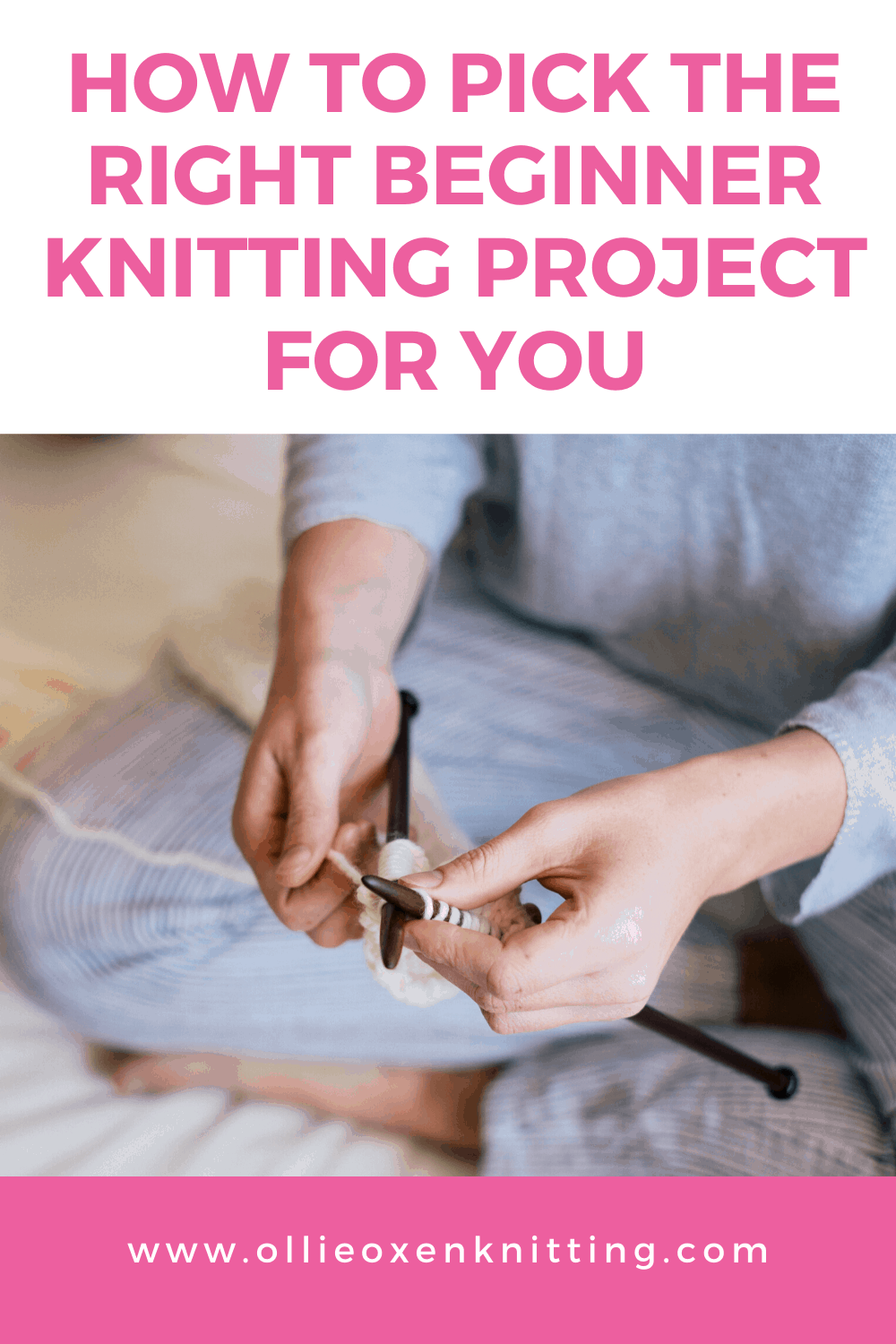Ready To Dive Deeper Into The World Of Knitting?
Successfully finishing your first swatch is such an exciting time for any new knitter. With literally thousands of knitting projects to choose from, it can be a bit overwhelming to pick the next one. Below are some things to consider when narrowing down your project choice.
Dishcloths And Blanket Squares
Dishcloths are, hands down, my favorite “new knitter” project. They are lightning quick and no one is going to notice your less-than-perfect tension after cleaning last night’s pot roast. You can knit them in whatever yarn you want but I personally think they look and perform best when made out of a tightly spun worsted weight cotton. They make great gifts and are an easy way to share your accomplishments.
Similarly, blanket squares are the bee’s knees for seasoned crafters and newbies alike. Rather than commit to knitting an entire blanket, you can select what squares pique your fancy and go from there. If you decide not to create the whole blanket, you have some lovely dishcloths to add to your kitchen. If you’d like to get involved with charity crafting, blanket squares are a hot item request. Simply send in your squares to the coordinator and they’ll stitch it together and gift it for the group. Now that’s love.
Hats
Hats are another great project to start with your newfound skills. Nine times out of ten, a hat pattern will require that you knit in the round. Don’t worry, you already know everything you need to know in order to do this. Knitting in the round, whether you use double pointed needles (DPN’s), two circular needles, or the magic loop method, just requires some getting use to.
Many basic hats start at the brim, knit evenly for a few inches, then decrease for the crown. In my opinion, the trickiest part is casting on the brim, and the last few stitches when you’re closing up the crown. I wouldn’t say that it is hard but it is a new skill to handle the extra needles or the loop. Overall, a small price to pay for something so comforting, cozy, and unique!
Like with dishcloths, there are hundreds of hat patterns using worsted weight yarn and size 8 needles. If you’re on a budget or you’d just like to keep your yarn supply contained, hats are a simple way to get some serious bang for your buck.
Socks And Mittens
Oh socks. I simply love knitting socks. They’re my current obsession and I don’t see that ending anytime soon! Since they tend to use a much smaller needle size (we’re talking 000-2 small. For reals.), socks are a very portable project. With the ability to make them as simple or as complicated as you want, there really is something for everyone.

As far as the actual knitting goes, for socks and mittens, you’ll need to be able to create a toe (or for a mitten, the part by your fingertips). If you have already have learned how to do increases and decreases, you really just need to make sure you follow the pattern and put them in the right spot.
For socks, you’ll need to make a heel and for mitts, you’ll need to make a thumb gusset. These are very similar to each other. Essentially, you’ll be adding extra fabric to make room for where the body curves. I love watching the heel come together: your sock goes from being a tube to something that actually resembles a foot! It’s magic.
Socks and mittens may have a few extra steps but they become second nature after a time or two. Many people love creating perfectly fitted socks and mittens by experimenting with all of the different heel and toe options. If this is something that interests you, just don’t forget that you have to make two of them! “Second Sock Syndrome” is a real thing in the knitting community!!*
*Second Sock Syndrome, or SSS, is a phenomena in the knitting community where, after completing the first item in a pair, the knitter suddenly loses all interest in the project. The completed item then sits for the rest of eternity, alone, in the WIP basket. To counteract this, many experts suggest casting on both items at the same time and alternating craft time until both objects are completed.
Cowls And Scarves
Nothing says cold weather quite like a chunky scarf! While many people really enjoy the repetitiveness that comes with a long scarf or a thick cowl, I don’t really think it’s the best project for a new knitter. For one thing, your tension needs to be on point for the entire project. When you’re first learning to knit, it’s not unusual for you to have a tight gauge one day and a loose one the next. Until this stabilizes, I’d be wary of any project that is lengthy.
For another thing, yes, you do have all of the skills required but what a lot of people don’t think about is the time commitment. Scarves, in particular, are LONG. Very, very long. When you’re new and you’re not quite sure what type of knitting you like, completing six feet worth of the same pattern can seem like a life sentence. The temptation to quit can get really strong and that is a hard way to start out your knitting journey.
Instead, I suggest that you wait until you’re more sure of your knitting tendencies and preferences before starting a scarf or thick cowl. Once you know that you’ll truly enjoy the yarn and pattern you’ve selected, knitting a scarf can be an incredibly zening way to spend an afternoon. Until then, a blanket square is a great way to test a yarn and pattern before really committing.
Shawls And Wraps
There are several types of shawls, but most people hear the word “shawl” and immediately start thinking of intricate lace. While there are obviously varying degrees of difficulty for shawls, I think these are a great project for when you’re more established. Like with scarves, shawls are a large time commitment. Shawls however, tend to require focus, especially in the beginning.
Strictly speaking of the type of shawl most people envision, these require lace weight yarn and about a size 8 needle. One of the most fantastic things about lacey shawls is that you get a whole lot of mileage out of that ball of lace. You can knit for weeks, and weeks, and weeks. If you’re on a budget, this is a dream come true. If you’re a new knitter that has never really used lace weight yarn or done a lace pattern, this is just a WIP waiting to happen.
Rather than jump head first into a gorgeous lace shawl, I suggest knitting a lacey hat in lace weight yarn to see how you feel about lace knitting in general. Keep in mind that shawls are knit flat so a lot more purling will be involved with a shawl. Think of the hat as a test run for your future masterpiece.

Sweaters And Cardigans
Ahh sweaters**. The epitome of knitting. While I think that every knitter should craft at least a baby sweater in their knitting career, I don’t think this is a great idea for new knitters. I wouldn’t say that sweaters or cardigans are hard per say (it’s all just knits and purls after all) but I would say they can be a huge undertaking for a few other reasons.
For one, there is gauge. With some of the above projects, you can fudge your gauge or stretch it out in blocking and no one will be the wiser. Sweaters are not forgiving of tension mistakes and miscalculations. Not. At. All. Until you’re more sure of your tension consistency, knitting a sweater is something I would hold off on.
Since they require so much yarn at a thicker gauge, most sweaters are a financial commitment as well. It’s not unheard of to need six skeins to knit a woman’s worsted weight cardigan. That can be a lot of dough to spend on something that you may or may not love and that maybe/might fit.
When you are ready to start a sweater, try your hand at a baby sweater as similar as possible to your dream project. This way, you’ll be able to learn, practice, and perfect all of the techniques you need for your full size sweater but with a fraction of the time and financial investment. You’ll also have an adorable baby gift just waiting to be given out. It doesn’t get much better than that!
**In case you were wondering, the difference between a sweater and a cardigan is that a sweater needs to be pulled over the head and a cardigan has an open front. The more you know, right? Other than that center opening, they’re the exact same thing.
Now Forget Everything I Just Said
Keep in mind that the above are just my suggestions. And while I think I just gave you some pretty good advice, I’m not you. I don’t know your passions, desires, and abilities. If you see a yarn or project that just makes your heart sing, go for it! What’s the worst that can happen? You’ll end up with a WIP or end up throwing it away. That’s it!
The knowledge that you’ll gain from the project is invaluable no matter what the outcome. While having a finished project that you love is incredible, there is something to be said about the journey to get there. Don’t be afraid to go down a road you’ve never gone down before. The whole point of learning to knit is to be able to grow and express yourself through fiber. So go out and express yo self!

What About You?
What project did you pick for your first knitting project? Let us know in the comment section down below!











